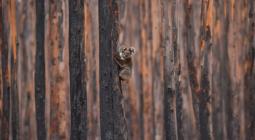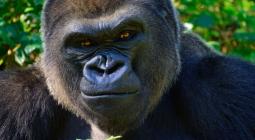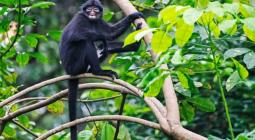Hedgehogs ‘near threatened’ on red list after 30% decline over past decade
The mammals were once common across Europe but urban development has pushed them towards extinction
Hedgehogs are now listed as “near threatened” on the International Union for Conservation of Nature’s red list after a decline in numbers of at least 30% over the past decade across much of their range.
While hedgehogs were once common across Europe, and were until now listed as of “least concern” on the red list, they are being pushed towards extinction by urban development, intensive farming and roads, which have fragmented their habitat.
Their population has suffered from vehicle collisions, the use of pesticides and poorly managed domestic gardens. Pesticides kill the insects that hedgehogs eat and may also poison them directly.
Abi Gazzard, a programme officer at the IUCN, said: “Unfortunately, evidence points towards a worrying and widespread downward trend. The red list assessment also highlights data uncertainties – for example, the limits of this species’ distribution are not entirely clear, and there are gaps in knowledge of its populations. There is still a chance to halt the decline of the western European hedgehog, and we must aim to prevent any further worsening of status.”
The Mammal Society is calling for people to look after hedgehogs by gardening in a wildlife-friendly way. This includes leaving small gaps in fences to allow hedgehog movement between gardens, not using pesticides and creating shelter with log piles or hedgehog houses. One in four UK mammal species are threatened with extinction, and many others are in decline.
Hope Nothhelfer, a communications officer at the Mammal Society, said: “This decline will likely come as no surprise to the average person. When hedgehogs come up in conversation, it’s not long before someone says that they just don’t see them any more. The hope is that as hedgehogs become more and more like a distant memory from our childhoods, we will respond with action that will bring these memories back to life.”
Shorebirds have fared badly on the red list this year, with four UK shorebird species moving to higher threat categories. These are birds that come to the UK in winter from colder climates and rest and feed on the shore and in estuaries before moving back to their breeding grounds for spring.
Birds that have been added to the list include the grey plover, which has declined by more than 30% globally since the late 1990s. Its conservation status has moved two categories from “least concern” to “vulnerable”. Dunlins and turnstones have faced steep declines and have both been moved from “least concern” to “near threatened”, and curlew sandpipers have declined by more than 30% globally since the late 2000s and have moved from “near threatened” to “vulnerable”.
Threats they face include pollution, development and the climate crisis, with sea level rise causing increased erosion and a heightened risk of coastal flooding, forcing wildlife into smaller and smaller spaces.
The red list also reveals that 38% of the world’s tree species are at risk of extinction, in its first global tree assessment. The list shows that at least 16,425 of the 47,282 species assessed are at risk of extinction. Islands host the largest proportion of threatened trees, where they are at risk due to deforestation for urban development and agriculture, as well as invasive species, pests and diseases.
Cover photo: By The Guardian





